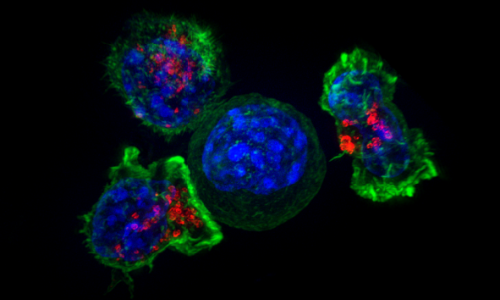Loading
Journal of Cancer Immunology
ISSN: 2689-968X
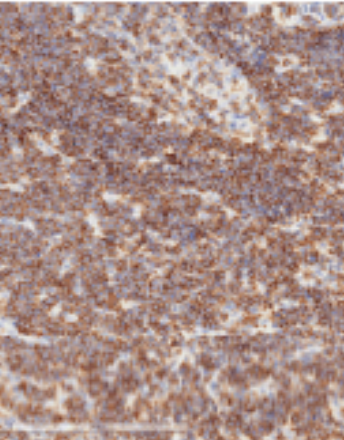
2021
Volume 3, Issue 3, p143-176
Articles published in this issue are Open Access and licensed under Creative Commons Attribution License (CC BY NC) where the readers can reuse, download, distribute the article in whole or part by mentioning proper credits to the authors.
Quantifying Neural Stem Cell-Derived Extracellular Vesicle Uptake Using Imaging Flow Cytometry
Taylor J. Elliso, Brian J. Jurgielewicz, Steven L. Stice, Yao Yao
Nanomedicine, which includes nanoparticles and other nanomaterials for diagnosis and therapeutic delivery to treat numerous diseases, is making advances.
J Cancer Immunol, 2021, Volume 3, Issue 3, p143-146 | DOI: 10.33696/cancerimmunol.3.049
Profiling the Energy Metabolism at the Cell Subpopulation Level
Karim Benihoud, Catherine Brenner
Although being a complex pathology with genetic as well as non-genetic etiologies, cancer is characterized by a limited series of hallmarks including energetic metabolism reprogramming.
J Cancer Immunol, 2021, Volume 3, Issue 3, p147-150 | DOI: 10.33696/cancerimmunol.3.050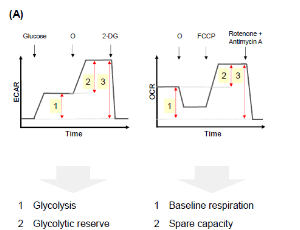
Anti-PD1 Therapy in Lynch Syndrome-associated Recurrent Glioblastoma
Wendy J Sherman
When a patient is diagnosed with a glioblastoma, they are often blindsided with the diagnosis, experiencing symptoms typically developing over only days to weeks and then often undergoing a craniotomy within days of presentation, only to then be given a terminal diagnosis.
J Cancer Immunol, 2021, Volume 3, Issue 3, p151-153 | DOI: 10.33696/cancerimmunol.3.051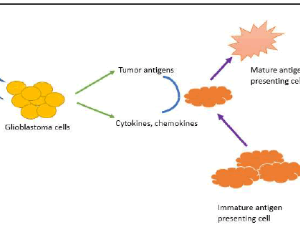
Polycyclic Aromatic Hydrocarbons and Mammary Cancer Risk: Does Obesity Matter too?
Lydia Lichtiger, Janelle Rivera, Debashish Sahay, Rachel L. Miller
Breast cancer is the most commonly diagnosed cancer in women in the United States. Breast cancer incidence rates, particularly among younger women, have been increasing since the 1930s, and are only partially explained by changes in parity, age at first birth, and improved screening and detection. Many questions remain unanswered regarding the mechanisms that underlie current risk.
J Cancer Immunol, 2021, Volume 3, Issue 3, p154-162 | DOI: 10.33696/cancerimmunol.3.052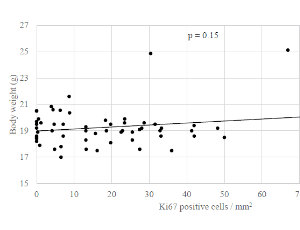
High Expression of TIM 3 and Galectin 9 on Immunohistochemistry Staining of Tumor Specimen at Diagnosis in Pediatric Patients with Ewing Sarcoma
Stephanie J. Si, Gerald B. Wertheim, David M. Barrett
The concept of immunotherapy has been traced as far back to third century BC Qin dynasty in China through the purposeful inoculation of Variola minor to prevent smallpox.
J Cancer Immunol, 2021, Volume 3, Issue 3, p163-176 | DOI: 10.33696/cancerimmunol.3.053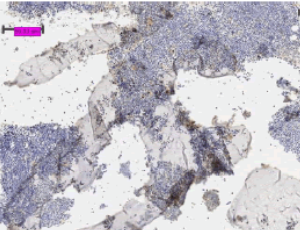
Recommended Articles
The Nature of Radiation-induced Inherited Recessive Gene Mutations in Drosophila Melanogaster
The nature of gene mutations induced by ionizing radiation in germ cells and transmitted to offspring remains one of the most important problems in radiation genetics of higher eukaryotes. The data accumulated in this field were obtained by different authors under different experimental conditions which does not give a complete insight about the nature of radiation-induced inherited mutations at different genome levels (chromosome, gene, DNA).
Prevalence of Symptom Clusters in Cancer Patients at First Presentation in Palliative Care Clinic as per Different Disease Groups
Cancer has its own disease burden and patients usually suffer from symptom clusters when they are referred for palliative treatment. Identification of symptom cluster trajectories will help clinician to take into account measures that can optimize quality of life of palliative patients. Therefore the aim of this paper is to determine the overall prevalence of symptoms and symptoms clusters in different disease groups according to etiology at the time of first visit to Palliative care clinic by using HIS Palliative First Assessment note indicating Edmonton symptom scale.
Chimeric Antigen Receptor CAR NK Cells Emerging Immunotherapy for the Treatment of Cancer
Although NK cells are recognized as effector lymphocytes of the innate immune system, they also regulate the adaptive immune response by releasing inflammatory cytokines and developing immunological memory. Unlike other lymphocytes such as T or B cells, NK cells do not express rearrangeable, antigen-specific receptors.
Emerging Role of TRPML1 Mucolipin Endolysosomal Channel in Cancer
The transient receptor potential mucolipin 1 (TRPML1) is an endolysosomal channel belonging to the TRP family. Clinically, mutations of TRPML1 have been responsible for a severe lysosomal storage disorder called mucolipidosis type IV.
Manipulating Oxidative Stress Following Ionizing Radiation
It is now well accepted that the ionizing radiation-generated reactive oxygen species (ROS), that constitute ~2/3 of the effects of external beam radiation, do not only produce direct tumor cell death, but also affect the surrounding microenvironment. Moreover, this indirect effect of radiation may result in systemic effects, specifically the initiation of an inflammatory response.
Uniportal VATS Lobectomy for Lung Cancer: Feasibility and Cost Effectiveness in a Single Center Experience
In last decades, video-assisted thoracic surgery (VATS) together with robotic-assisted thoracic surgery (RATS) can be considered the biggest innovation in thoracic surgery. This approach drastically changed the way of performing surgical operations, improving patient’s outcome undergoing thoracic surgery.
Circulating Cell-Free RNA: A New Perspective for Endometrial Cancer
In order to implement the knowledge of cancer to monitor its evolution and setting, in the last decade, new minimally invasive and repeatable samples collection have been developed such as liquid biopsy.
Searching for Easy Reliable Prognostic Parametres in Colorectal Cancer Patients Evaluation
Despite the advances in diagnostic and therapeutic field, colorectal cancer (CRC) still remains the third most common cause of death worldwide, with more than 600,000 cancer-related deaths per year.
Deubiquitinase as Potential Targets for Cancer Immunotherapy
During the last few decades, immunotherapy is considered to be an important approach to help our immune system to fight various kinds of diseases, such as tumor. Sometimes, it works very well for some types of cancers, for example: bladder cancer, colorectal cancer, breast cancer and lymphoma.
VA-Radiation Oncology Quality Surveillance Program: Enhancing Quality Measure Data Capture, Measuring Quality Benchmarks and Ensuring Long Term Sustainability of Quality Improvements in Community Care
High quality cancer care improves patient survival and quality of life. Radiation plays an important role in cancer management, given that over 50% of all cancer patients receive radiation therapy as either a primary treatment or for palliation. Ensuring quality of radiotherapy specifically, is therefore important to achieving optimal patient outcomes.
Reduced BCR Signaling and a Metabolic Shift Accompanies Malignant Progression of Follicular Lymphoma: A Lesson from Transcriptomics
Lymphoma represents the most common form of hematological malignancy in the developed world, accounting for 3.6% of all cancers and 55.6% of all blood cancers in Europe, with non-Hodgkin lymphomas (NHL) representing 90% of cases.
Early Onset Fetal Growth Restriction: Does Path to Diagnosis Impact Outcomes and Pathology?
The etiology of fetal growth restriction is rooted in inadequate maternal-placental vascular malperfusion (MVM) of the placenta. Risk factors for MVM are broad and include maternal, fetal, and placental antecedent determinants.
Synthetic Lethal Drug Combinations Targeting Proteasome and Histone Deacetylase Inhibitors in TP53-Mutated Cancers
Tumors harboring mutations in certain oncogenes are often dependent on activation of certain pathways which becomes essential for the survival of the cancer cells. This condition is formally known as synthetic lethality, a state when simultaneous loss of two genes is lethal to a cancer cell, while the loss of the individual genes is not.
Role of the Gut Microbiome in the Modulation of Cancer Immunotherapy Response
The gut microbiome or gut flora is a vast community of microorganisms such as bacteria, viruses, protozoa, and fungi that inhabit the digestive tract of the human and other animals [1,2]. In the human body, bacterial species colonize into the oral cavity, skin, vagina, and placenta, however, the largest population of microorganisms resides in the intestine.
Do Support Vector Machines Play a Role in Stratifying Patient Population Based on Cancer Biomarkers
Cancer is a worldwide public health issue that affects millions of people every year. In 2018 there were 17 million newly documented cases of cancer globally (8.8 million in men and 8.2 million in women), leading to 9.6 million deaths. Cancer is a vastly heterogeneous disease, with over 100 different types of cancer currently identified in humans; the most common types of cancer are lung, female breast, bowel and prostate, these four types account for more than 40% of all new cancer case
Prognostic Role of Human Epididymis Protein 4 (HE4) in Ovarian Cancer Treatment: Our Point of View
In the last 10 years, the marker “Human Epididymis protein 4 (HE4)” for the management of gynecological tumors has entered powerfully in the world literature. At the moment, carrying out an accurate research in the main scientific portals such as PubMed, we can find more than 2,000 works concerning Cancer antigen-125 (Ca125), but those concerning HE4 are less than 400.
Sentinel Lymph Node Biopsy after Neoadjuvant Chemotherapy for Breast Cancer
Breast cancer is the second most common cancer worldwide, affecting nearly one in eight women. Accurate cancer staging is essential for determining the patient’s prognosis and for choosing the appropriate treatment.
Platelet Hyperactivity and Dysfunction in Diabetes and Cancer
However, the entire coagulation cascade is dysfunctional, in progressed chronic diabetes and cancer patients.
Development of HPV 16/18 E6 Oncoprotein Paperbased Nanokit for Enhanced Detection of HPV 16/18 E6 Oncoprotein in Cervical Cancer Screening
According to global cancer statistics GLOBOCAN, carcinoma of cervix is ranked as the fourth most common malignancy among women worldwide with an estimation of 570,000 cases and 311,000 deaths in 2018. It is the second most common female malignancy in Lowand- Middle Income Countries (LMICs). In Kenya, the prevalence is 25 cases per 100,000 women. Approximately 75% cases of cervical cancer are caused by persistent infections of the cervical mucosal epithelium with carcinogenic types of human papillomaviruses (HPVs) mainly 16 and 18.
Gastric Cancer: A Brief Review, from Risk Factors to Treatment
Gastric cancer (GC), also known as stomach cancer, is a worldwide health problem. Anatomically, it can occur from the gastroesophageal junction to distal portions of the stomach. Considering both sexes, worldwide, it is the 5th most common neoplasm (5.7%) and the 3rd cause of mortality among malignancies, leading to approximately 782,000 deaths in 2018. The incidence varies geographically but 50% of new cases are diagnosed in developed countries. High incidence is observed in Asia, Latin America, and in the central and eastern parts of Europe. There are several ways to classify GC, but the most used is Lauren’s Classification, which proposes two main histological groups: intestinal and diffuse. This classification is important because there are marked etiological, pathological, and epidemiological differences between the subgroups, guiding the clinical approach for each patient.
About Scientific Archives
Scientific Archives is a global publisher initiated with the mission of ensuring equal opportunity for accessing science to research community all over the world. Spreading research findings with great relevance to all channels without any barrier is our goal. We want to overcome the challenges of Open Access with ensured quality and transparency.

